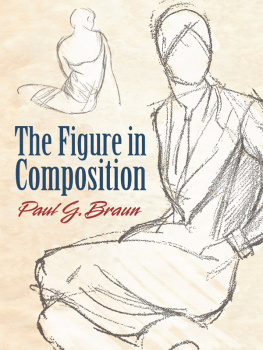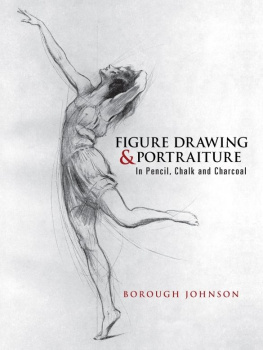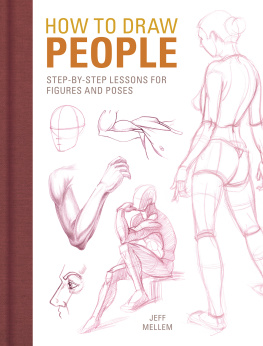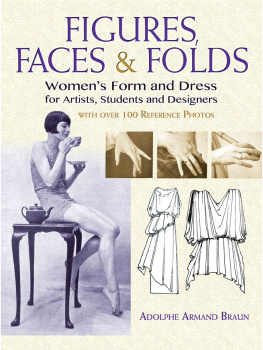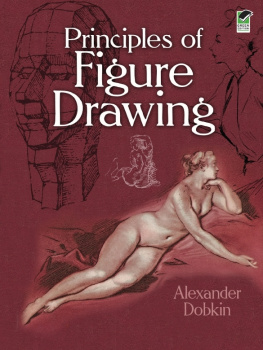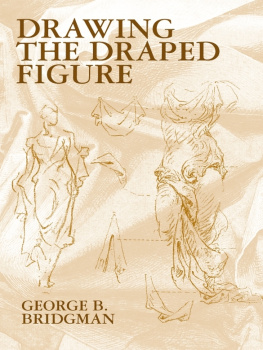The Figure in
Composition
Paul G. Braun

Dover Publications, Inc.
Mineola, New York
Bibliographical Note
This Dover edition, first published in 2011, is an unabridged republication of the work originally published by Bridgman Publishers, Inc., Pelham, N.Y., in 1930 under the title Figure Composition.
Library of Congress Cataloging-in-Publication Data
Braun, Paul G.
[Figure composition]
The figure in composition / Paul G. Braun. Dover ed.
p. cm.
Originally published: Figure composition. Pelham, N.Y.: Bridgman Publishers, 1930.
ISBN-13: 978-0-486-48155-5
ISBN-10: 0-486-48155-7
1. Human figure in art. 2. Composition (Art) I. Title.
NC765.B76 2011
743.4dc22
2011016766
Manufactured in the United States by Courier Corporation
48155701
www.doverpublications.com
CONTENTS
Time and again, I have heard art directors of different periodicals declare they could spot a students or a young illustrators work at sight.
There seems to be something lacking.
The figures may be well drawn. In many cases, figures constructed by students are drawn much better than those of our best illustrators. The fault does not lie in their inability as draftsmen, but, one might say, in their evident desire to show the world how well they can draw the figure. In their pictures they seem to draw the figures and nothing elseand make them all of equal importance. An art director of an important monthly told me he had hundreds of figure draftsmen at his call but only a few men who realized what a composition was, and that the figure was only an important UNIT , but still a unit withal, to be kept in its place in the picture.
Well known illustrators have told me practically the same thing, that the foundation of all good pictures is found in their designthe relative value of the different units and not in the cleverness of the hand or technique.
These pages will be devoted to the study of the figure with that end in view, i.e., the figure subordinated to, and only a UNIT in the composition.
The book is designed primarily for the use of teachers and students who have some knowledge of the figure and design; to suggest pathways to be followed until the student discovers new ones for himself.
P. G. B.
In all compositions and illustrations the figure occupies a given space, so we will start our study by making our drawings within such space or spaces.
Make your sketches smallyou wont have room for a lot of unnecessary detail. On your drawing paper place two marks about five or six inches apart. Within that space the entire figure must be drawn.
Pose your model in a simple standing or sitting position and start to draw. Carry the sketch about as far as shown on the opposite page. Stop and compare it with the model. Notice the big shapes, the torso, the hips, their movement and the length of the arms and legs in comparison with the rest of the figure. Study the sketch carefully and know what must be done to it before going ahead.
Work swiftly, but give a lot of time to comparing your model with your drawing.
After constructing figures as suggested in the preceding pages and using only the big simple forms; the next problem is to place such a figure in a given space.
Construct a simple rectangle and place in it an extremely simple memory sketch of a figure doing something, anything. Take time to make pleasing arrangement within your rectangle.
When you are satisfied with your design, pose the model in the action of the sketch and draw it simply and accurately; by that I mean, keep the big forms simple, the proportions correct and the action alive.
Spend more time comparing the sketch with the model than in drawing.
Learn to know the big shapes, how they move and their relationship in action.
Keep up this practice using all sorts of rectangles and figures in any conceivable action.

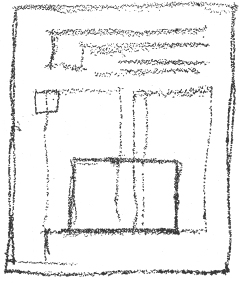



In drawing a single figure, there must be an action movement to a figure and an inaction movement. The action side should be drawn with angular or jerky lines while the opposing or inaction side should be more rhythmic or serpentine. These lines should be made as long as possibledo not begin at the top and draw down the figure in portions. There must be no patching together of piecesor little bitsthe long lines must indicate the figure as a whole from the beginning. If this procedure is followed the proportions and balance will be seen at once to either be right or wrong.


When beginning to draw the figure great care should be given to the general proportions. The best method is to find the centres of noticeable parts, such as taking the centre between the top of the head and the foot the figure is standing on. This divides the figure into two halves. Then by measuring divide these halves again into halves or thirds. It is always easier to compare measurements that are equal than those that are not equal.
To train the eye to see these proportions correctly without having to measure try to look at the several parts of the figure, one after the other, so as to become acquainted with their appropriate relative sizes. This is the ultimate goal.

There is another sort of harmony which is not so much a matter of leaving out things as of arranging them, and particularly applies to pictures with persons in them. Not only should the persons be necessary to our picture in the arranging of it, but they should seem interested in our picture. How often have you seen a picture of a group where one person is trying to make us interested in something outside the picture; or where a person is just about to step off the edge of the picture? Examination of pictures will show you that the rule is often obeyed with good effect and is never disobeyed without disaster.




